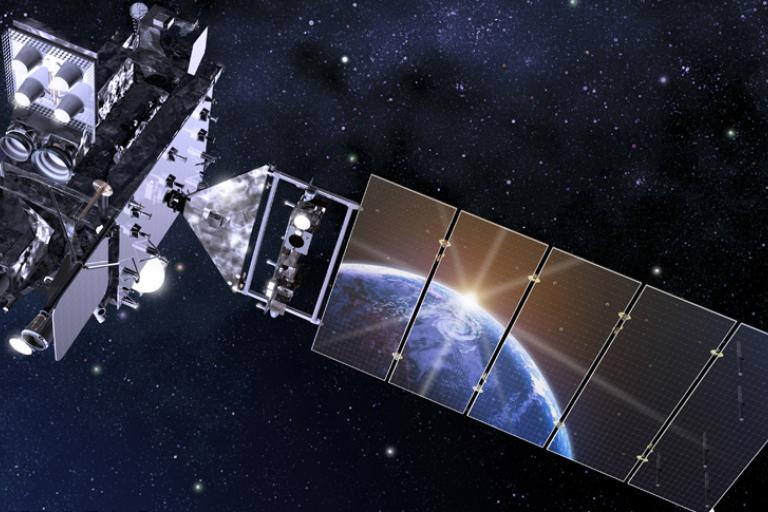GOES-U satellite heads to orbit

The Geostationary Operational Environmental Satellites (GOES) – R Series is the Western Hemisphere’s most sophisticated weather-observing and environmental monitoring system. It provides advanced imagery and atmospheric measurements, real-time mapping of lightning activity, and monitoring of space weather.
“GOES-U will combine high definition with advanced speed and precision to the real-time observations it will capture, which will help improve the accuracy and timeliness of our weather forecasts,” said NOAA Administrator Rick Spinrad, Ph.D. “Also, this satellite will ensure these critical data are available to NOAA forecasters into the 2030s.”
GOES-U soared into orbit on a SpaceX Falcon Heavy rocket in 25 June from NASA’s Kennedy Space Center in Florida. After approximately two weeks, it will reach geostationary orbit at 22,236 miles above Earth and will be renamed GOES-19.
Following a thorough checkout and validation of its instruments, the new satellite will shift to the GOES-East position and replace GOES-16 in the mid-2025 time frame.
“NOAA's GOES-U satellite marks a groundbreaking milestone in global weather forecasting and monitoring, providing vital data crucial in safeguarding the Western Hemisphere from environmental threats,” said Natalia Donoho, Head, WMO Space Systems and Utilization Division.
GOES-U is making history by carrying the first operational satellite solar coronagraph (CCOR-1). This instrument will work in tandem with the satellite’s other solar and space environment technology to detect hazardous space weather that could disrupt power grids, communications and navigation systems.
"GOES is one of the most valuable tools that our meteorologists and hydrologists have in their observational toolbox,” said NOAA National Weather Service Director Ken Graham. “This satellite will add to the current imaging capabilities for hurricanes, fires, severe storms and other life-saving applications, including the new coronagraph that will expand warning lead times for geomagnetic storms.”
Like the previous satellites in the GOES-R series, GOES-U will provide fast, accurate data for tracking severe storms, tropical systems, destructive wildfires (and the smoke they emit), floods, lightning, snow storms, dense fog and other hazards that threaten the U.S. GOES-U will work in sync with GOES-18, which is perched in the GOES-West position, to observe more than half the globe — from the west coast of Africa to New Zealand, and from Alaska to Antarctica.
- WMO Member:
- United States of America









